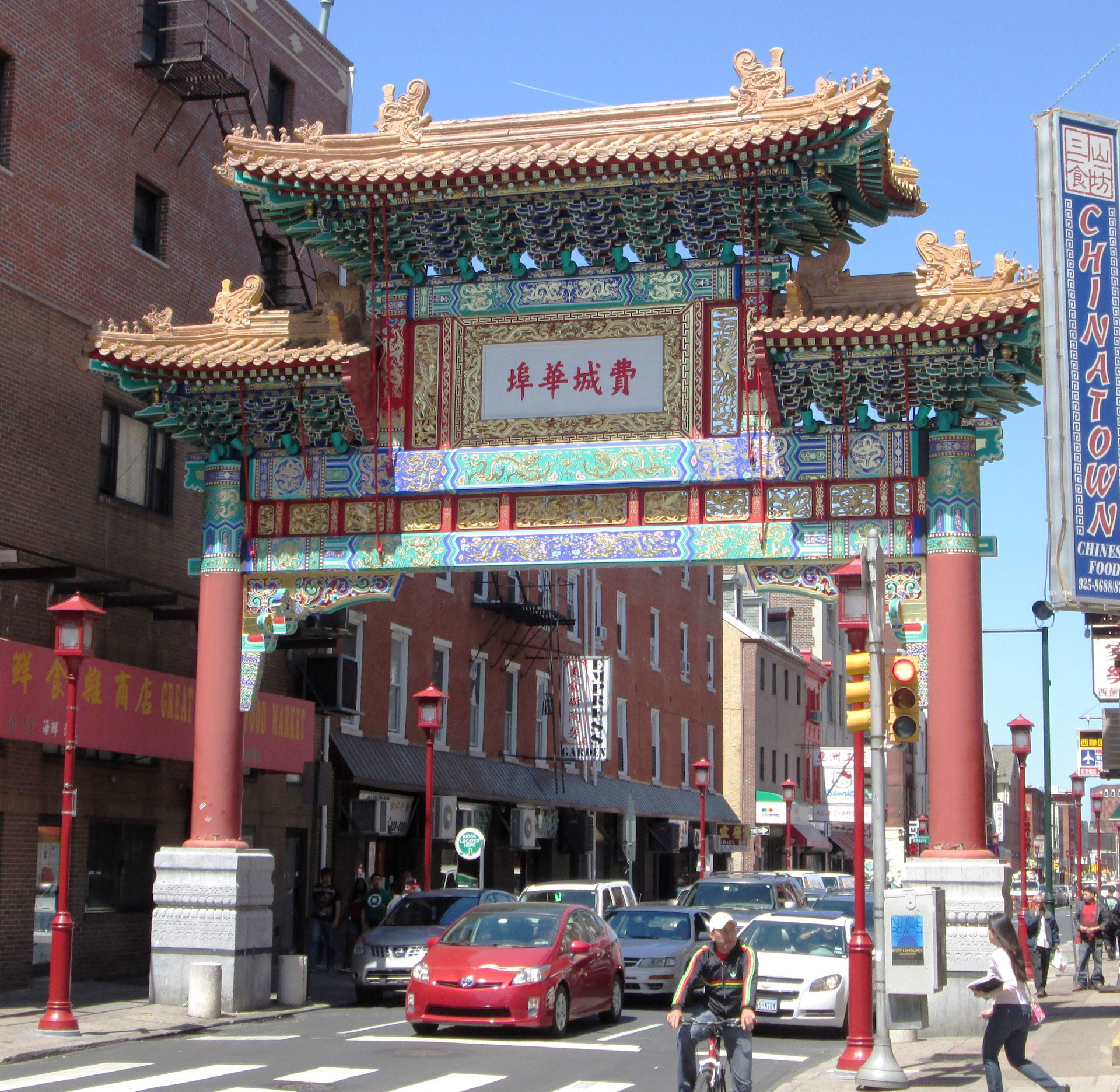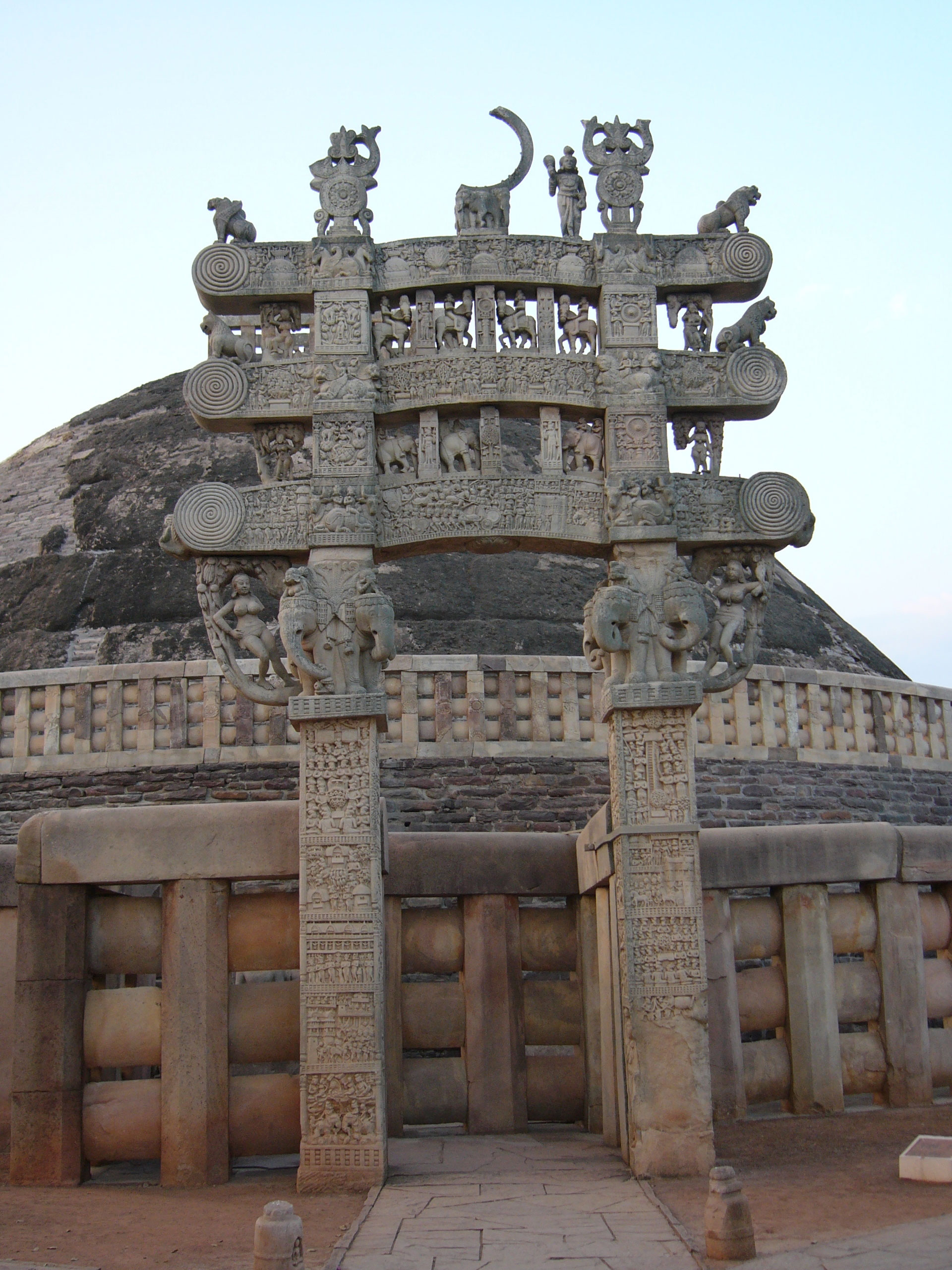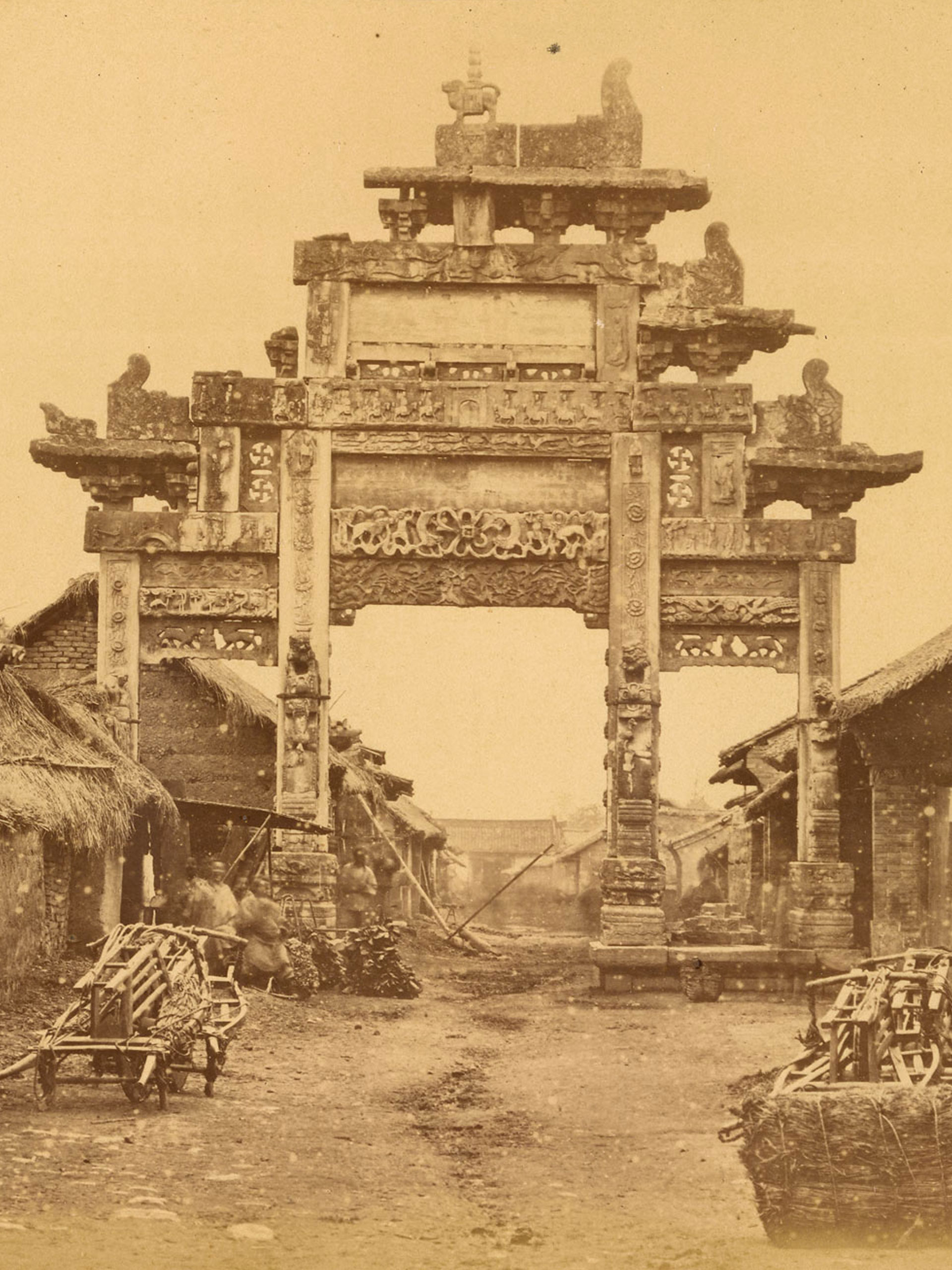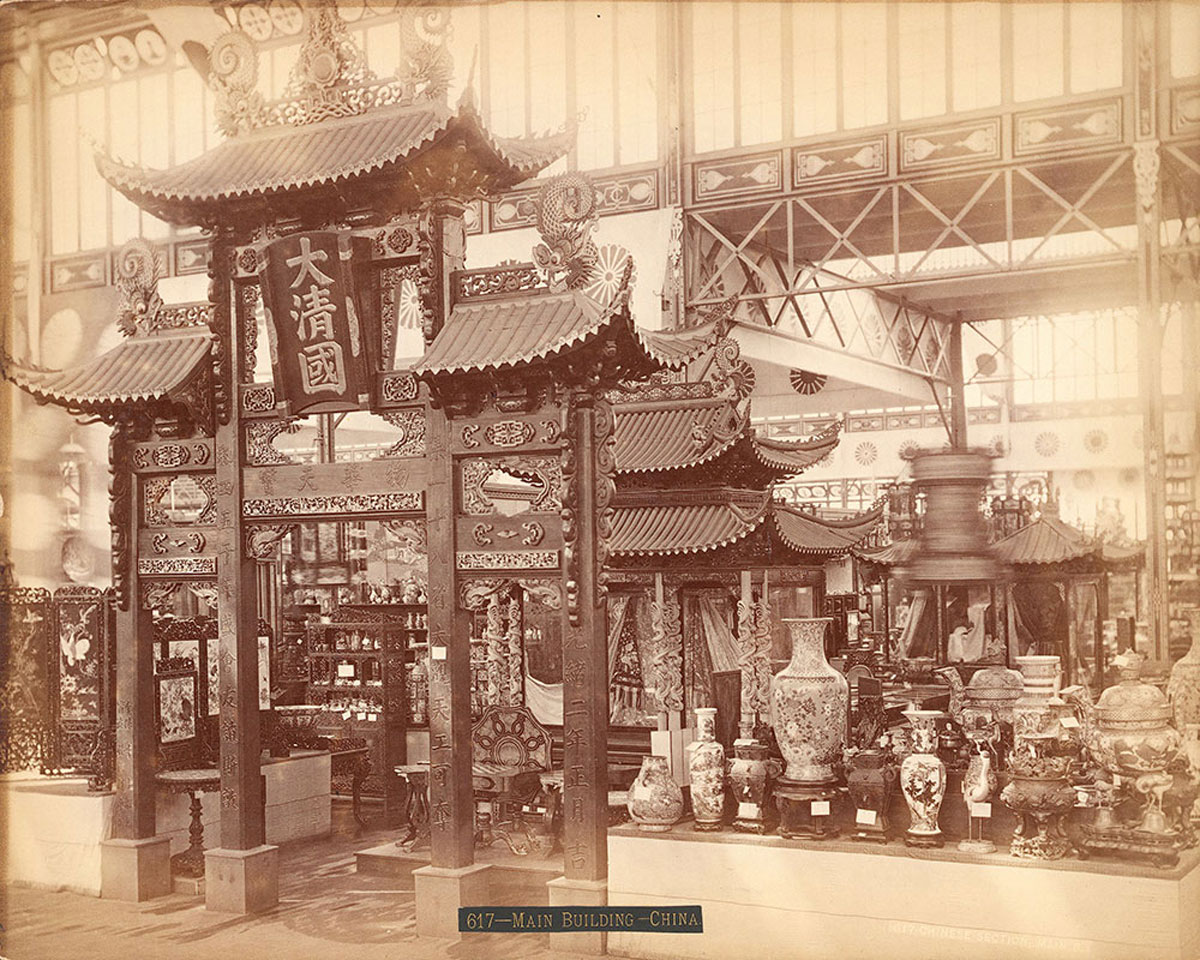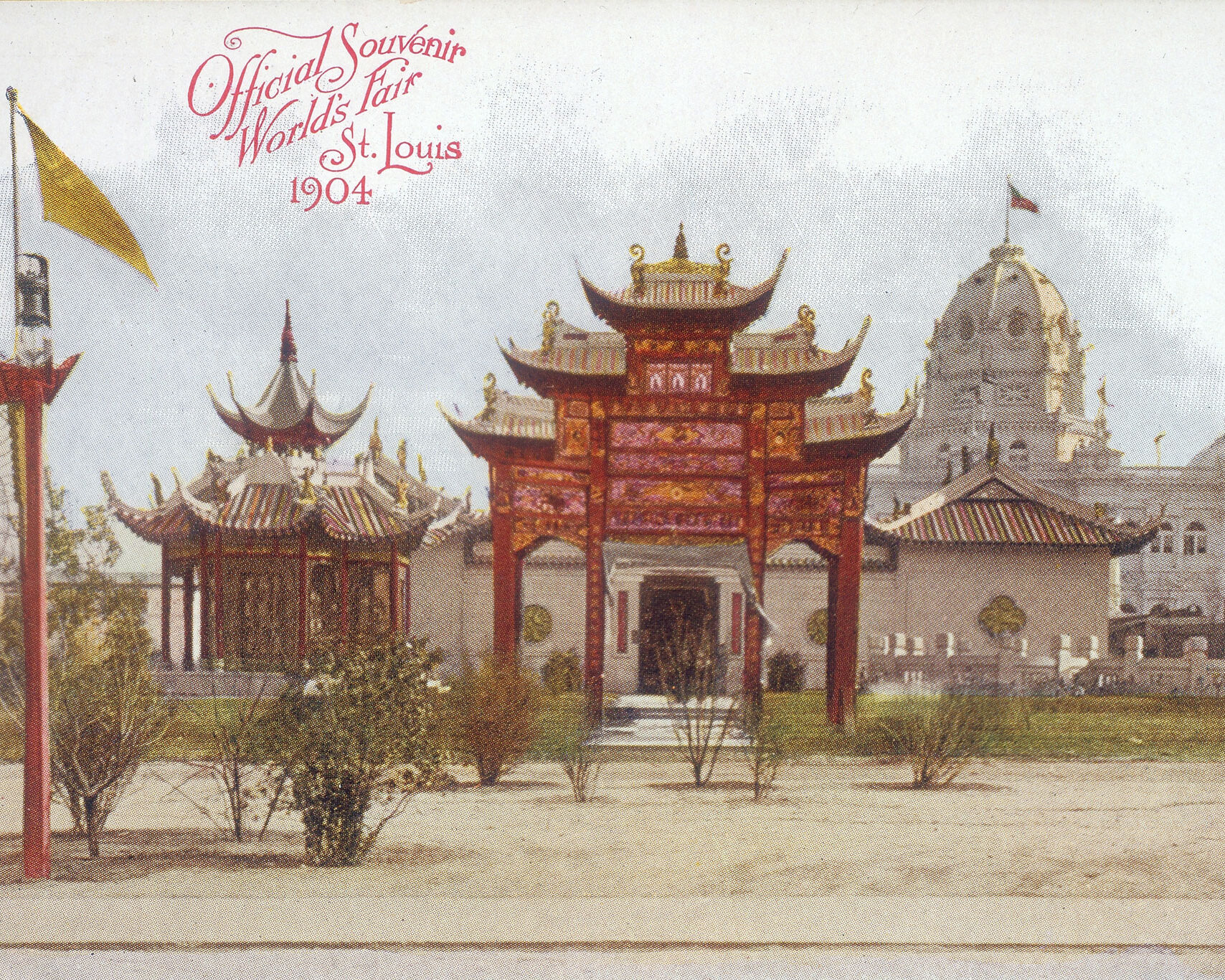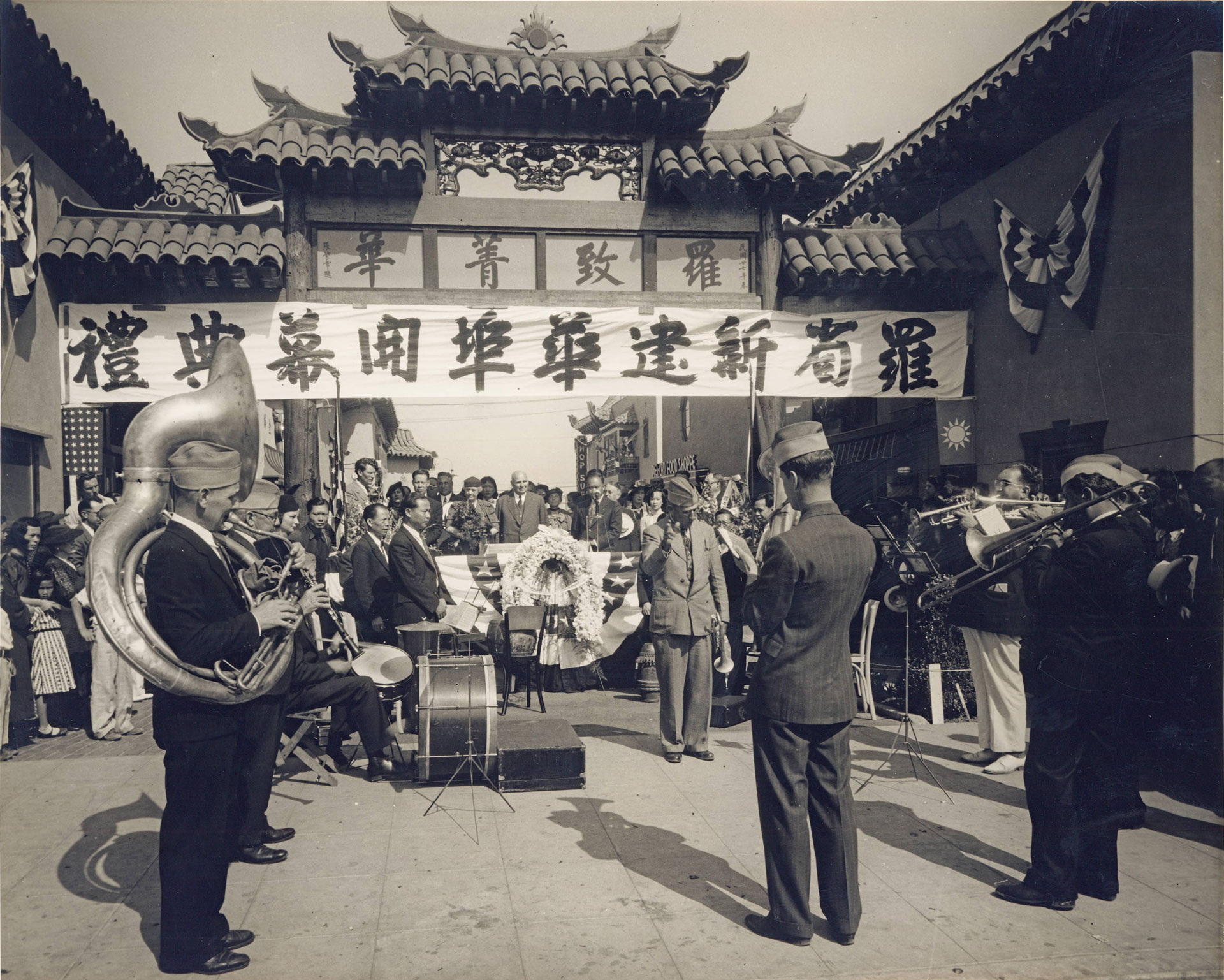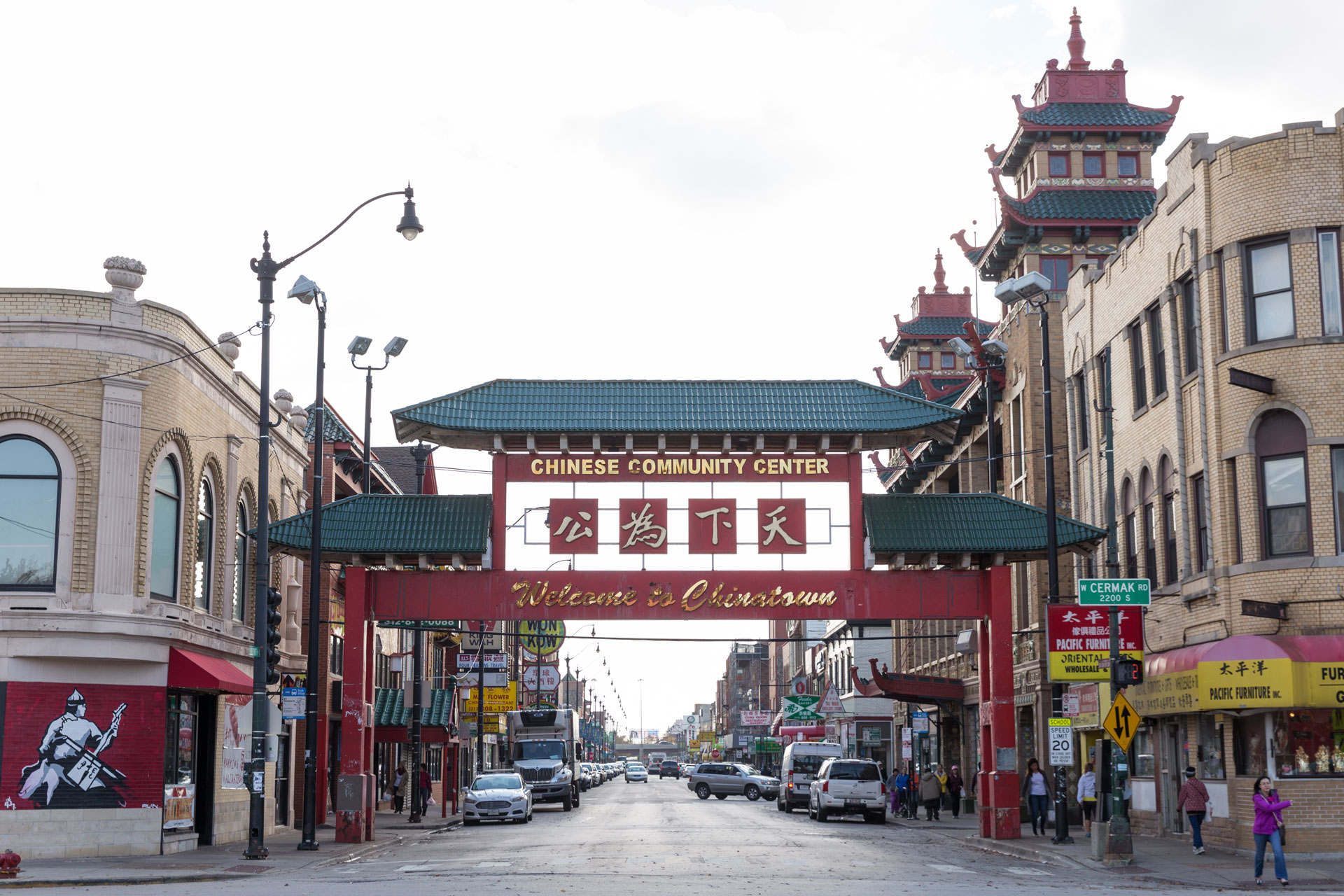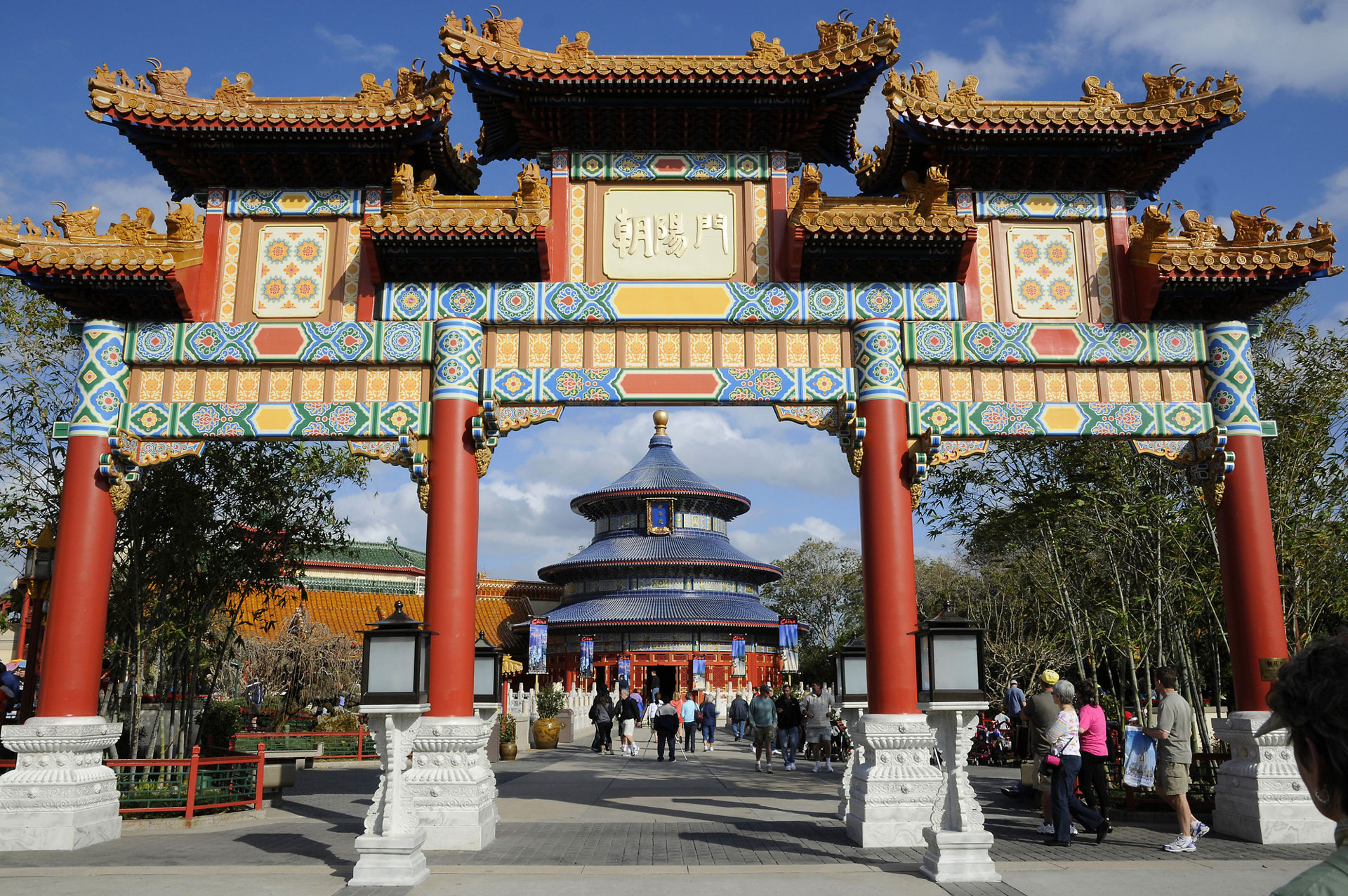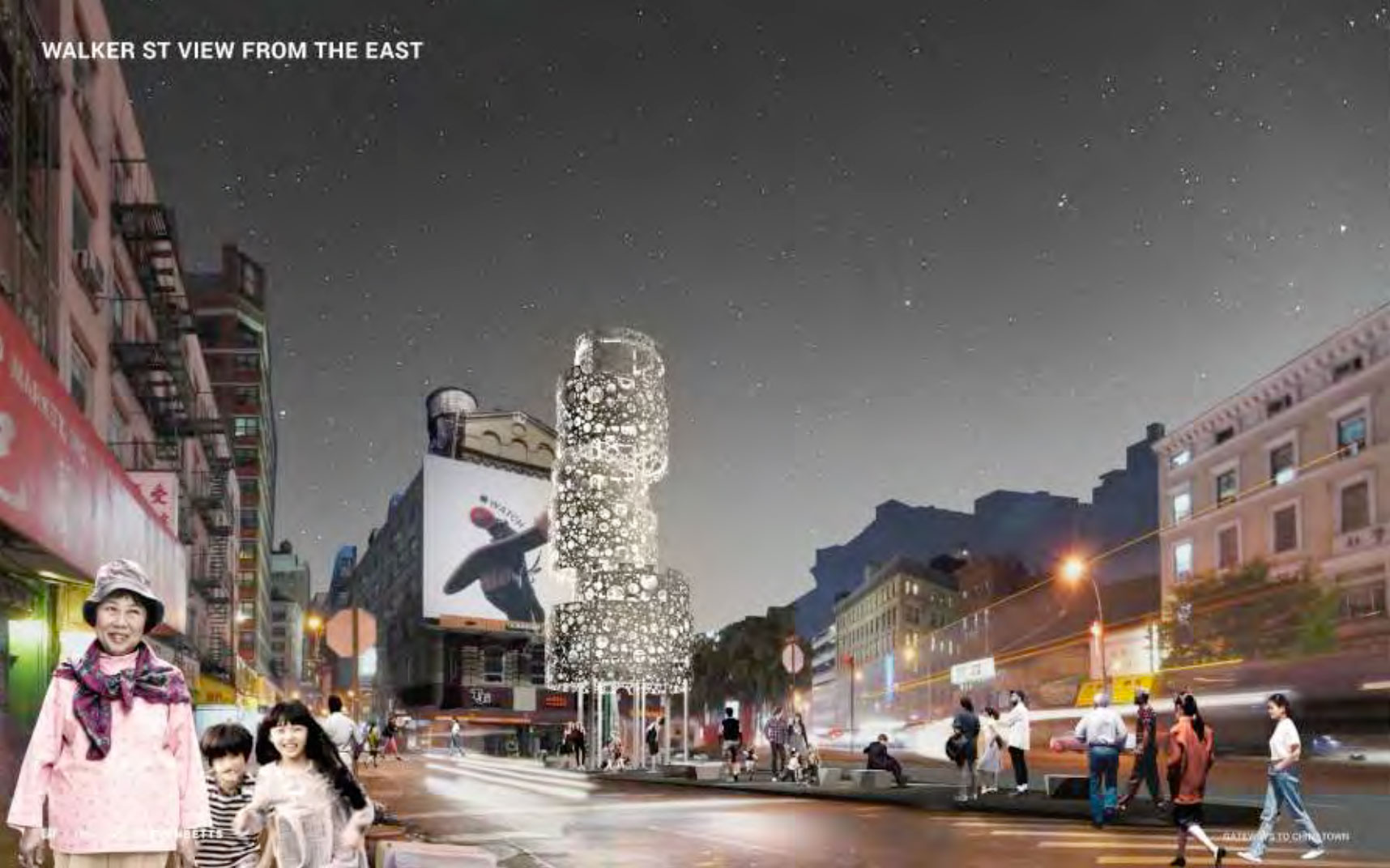
We are celebrating 15 years — and counting — of stories that are deeply researched and deeply felt, that build a historical record of what the city has been.
We are celebrating 15 years — and counting — of stories that are deeply researched and deeply felt, that build a historical record of what the city has been.
欢迎点击此处阅读这篇文章的简体中文版本
歡迎點擊此處閱讀這篇文章的繁體中文版本
What’s a Chinatown without a gateway? Chinatowns around the world have come to be closely associated and demarcated with these allusions to traditional Chinese architecture: part-syncretic evolution, part-commercial invention. The conspicuous lack of a gateway in Manhattan’s Chinatown does not mean a missing photo opportunity so much as millions of dollars in neighborhood investment forgone. The most recent attempt to create a sculpture that represents a complex, evolving culture and community ended in failure. Now, a new process is underway to redesign Kimlau Square and create a “Chinatown Welcome Gateway” there. To spur community conversation, and illuminate debates about cultural representation in Chinatown, architectural historian and planner Kerri Culhane and Yin Kong, director and co-founder of Think!Chinatown, have curated the exhibition Making or Faking Chinatown: Representing People, Place & Culture, on view through November 8, 2024. (Think!Chinatown is a community partner to Marvel Architects, the architectural design consultant for the NYCEDC’s Chinatown Connections project.) Below, Culhane and Kong explore the gateway’s place at the threshold between past and present, residents and visitors, culture and commerce, symbol and stereotype. Only a process that negotiates the many dimensions of today’s Chinatown, they argue, can open a new path forward.
How do you know you are in Chinatown? The boundary is not fixed, and probably changes from person to person. Yet there are tangible and intangible cues that tell you that you have arrived. While a handful of buildings have Chinese-style designs, for the most part, the tenement buildings in Manhattan’s Chinatown are hand-me-downs from waves of immigrant communities before us. The character is mostly found in how space is used and how people interact with each other in these spaces. It’s found in Chinese language signage for the many culturally relevant businesses, in the cultural and social activities in the park, and in how the sidewalks are used. Think of the heaping, colorful carts of the produce vendors along Canal and Mulberry or at Forsyth Plaza; the abundance of dried goods spilling out of the Chinese specialty groceries on Mott; the Aunties selling potted plants, hand-harvested gingko nuts and hand-wrapped zongzi from the sidewalk on Grand Street. This is organic placekeeping, practiced by the Chinatown community every day, and evidence of the vibrant ecosystem a community creates together.
Other visual cues might include public space design elements like lantern-shaped streetlights, and plazas and parks planted with bamboo. These are placemaking strategies undertaken by city entities, sometimes at the behest of local groups or organizations. Whether placemaking or placekeeping, each has a role in shaping the look, feel, and legibility of the community. Consequently, there is a strong sense of place in Chinatown, whether you are part of Chinatown’s social, cultural and political life; a fellow New Yorker passing through; or a tourist.
In 2021 — twenty years after the economic devastation of September 11, and amidst the ongoing fallout of Covid-19, including the anti-Asian violence unleashed by the sitting president calling it “the China Virus” — Chinatown was awarded a $20 million Downtown Revitalization Initiative (DRI) grant from the State of New York to invest in “its history as a cultural destination in order to preserve and return the neighborhood to a vibrant downtown area.” Among the ideas put forward for the DRI was a Chinatown Gateway, a placemaking strategy to boost tourism. As an example of what New York’s gateway could look like, the final DRI proposal included a photo taken from Wikimedia Commons of Philadelphia Chinatown’s traditional polychrome “friendship arch,” donated by the People’s Republic of China in 1984. Cutting and pasting Philadelphia’s gate to mark the entrance to New York’s Chinatown suggests an interchangeability — a generic placelessness — for a very particular place.
The New York City Economic Development Corporation, which has been tasked with managing the multi-agency, multi-constituent project, now called Chinatown Connections, has been careful not to prescribe the look of the “Welcome Gateway.” They will hire an artist to engage the community in a process to develop the design. Nevertheless, the term “gateway” has very specific connotations. Paifang 牌坊 or pailou 牌樓, commonly called Chinatown gates, gateways or friendship arches, are rooted in sacred Buddhist architecture. Beautiful, colorful, and ornate, paifang are highly photogenic. It is easy to see why they are credited with boosting tourism, but these structures predate Instagram by a couple thousand years. How did this ancient form, based on Indian religious architecture, become a gateway to so many Chinatowns?
Considered one of the eight essential features of Chinese spatial organization, the paifang 牌坊 or pailou 牌樓 descended from the sacred or ceremonial torana, arriving from India along with Buddhism via the Silk Road during the middle of the Han Dynasty (202 BCE–220 CE). In China, pailou traditionally served a similar commemorative purpose to that in India: separating sacred from profane, or honoring high-status individuals, families, scholars, or widows. The paifang performed functional placemarking, for instance demarcating the boundaries between districts in Beijing.
Over the course of the 20th century, the paifang’s meaning changed as it transformed into a defining visual symbol of Chinatowns from San Francisco to Singapore. Just type the word “Chinatown” into a Google image search and it will return pages of brightly colored Chinatown gates. These freestanding, typically ornate structures serve as territorial placemarkers of Chinese presence, or in the case of dwindling Chinatowns like Washington DC, increasing absence. The paifang is so successful a popular cultural symbol of Chineseness that it has been re-appropriated in China to enhance the tourist experience, a development Anne-Marie Broudehoux calls “the Chinatownization of Beijing.”[1] But how did a sacred structure become a picturesque backdrop for selfies?
San Francisco’s post-1906 Chinatown, with its pagoda-spired commercial blocks, is considered to be the first intentionally commodified North American Chinatown. After an earthquake and fire destroyed the original neighborhood, Chinese American entrepreneurs rebuilt San Francisco’s Chinatown around “beautiful artistic fantasies of the Far East.”[2] It was just two years after the popular China Pavilion at the 1904 St. Louis World’s Fair displayed traditional Chinese architecture alongside a Ferris wheel and other amusements. In the face of a plan to displace the Chinese from Chinatown, exoticizing the built environment to appeal to white tourists enabled the Chinese to remain in Chinatown, and established tourist expectations of Chinatowns elsewhere. This canny commodification of culture set the template for the development of North American Chinatowns as tourist destinations necessarily trading on commercialized tradition. In the words of historian Mae Ngai, this was “one of a few spheres of commercial activity available to Chinese Americans during the exclusion era.”[3]
The Chinatown Connections project includes in its scope a yet-to-be-defined/designed “Chinatown Welcome Gateway.” The word “welcome” suggests that the intended audience is outsiders coming to Chinatown. Given the great diversity of the Chinese and Asian diaspora that finds a cultural home in Chinatown, how could this gateway serve them? Can it serve multiple constituencies? And what should such a gateway look like? The question “who is the gateway for?” is a subset of a much larger and more complicated inquiry: Who is Chinatown for? Chinatown occupies the intersection — the blurry boundary — between what folklorist Winston Kyan calls “personal and publicly-consumed culture.”[4] It is both an economic enclave and cultural home for the diasporic Chinese and the broader Asian American community, yet a segment of its small businesses has historically relied heavily on a tourism-based economy. For most of its 150-plus years, Chinatown has been conflated with China in the popular imagination, an exotic and foreign colony in downtown New York. The “Orientalizing” of Chinatown fostered a lucrative tourism economy at a time when there were few economic opportunities for Chinese in the US. But the popular (mis)understanding of Chinatown that persists extends to anyone of Asian descent. Even fifth-generation Chinese Americans might still be asked, “where are you really from?”
Each generation’s relationship to Chinese and Asian American identity is different. Chinatown’s relationship to the rest of the city has also changed over the years. The greater diversity and larger numbers of immigrants since 1965 have brought greater regionality into Chinatown. From the original core of predominantly Cantonese immigrants, Chinatown has expanded to include members of the broader diaspora, and no fewer than seven Sinitic languages and dialects are spoke here daily. At the same time, as the Asian American community has become more affluent, the Chinatown economy has been shifting away from its dependence on tourism to cater to this broader constituency. A robust enclave economy now serves the needs and interests of locals as well as members of the Asian diaspora seeking a cultural connection.
The generation that birthed the Asian American movement in the 1960s fought hard for representation and visibility for the community, which was lacking in the flattened representations of identity made “palatable” to non-Asian Americans — think “model minority,” Charlie Chan, and chop suey. Generational, class, and cultural differences within the Chinese diaspora now challenge the notion of essentialized or Orientalized cultural representation. Nonetheless, there is familiar imagery common to Chinatowns: the paifang, the dragon, the lantern. The same image can instill cultural pride, or feelings of being stereotyped, or mean nothing, to different segments of our community. Writing about paifang and other means of “ethnic iconization,” landscape architect Chuo Li argues that “the creation of ethnic monuments tends to transform Chinatown into a ‘themed park,’ a place of staged cultural production and consumption.”[5] In this formulation, paifang are signifiers for those outside of Chinatown, not those living and working within it. Hence the “Welcome Gateway.” Sociologist Jan Lin writes about the effect of the “tourist gaze” on Chinatown. As Chinese American locals adapt to fulfill outsiders’ voyeuristic tendencies, they internalize tourist-focused representations.[6] Gateways typically draw upon an imagined historical past to serve this tourist gaze; we would like to see instead a placemaking strategy that helps ensure Chinatown’s future as a vital Asian American cultural home. How can this “Welcome Gateway” reflect the diversity of social and cultural life in Chinatown? Can it help sustain a community?
There is agreement across the neighborhood: Representation and pride in Chinatown as a cultural home is important. What most people want, but can’t necessarily articulate in the language of urbanism, is good placemaking and placekeeping. Without a broader vocabulary for what that might mean, the paifang, as shorthand for Chinese culture, becomes the generic default. We have the opportunity to design creative public space and public art that help shape neighborhood narratives, and influence what stories a community tells about itself and what stories are told about it. The “gateway” that Chinatown needs — one that helps build intergenerational social and cultural connections — might not look like a paifang.
Community engagement, of course, is a necessary, fraught, and nearly always inadequate undertaking. Public meeting participants tend to be a self-selecting group. Despite multilingual outreach and facilitation, the reality is that most new immigrants, particularly those recently arrived from Mainland China, are not engaged by public processes. There is not only a lack of linguistically and culturally specific outreach; more recent immigrants also lack experience with public processes, and their intense work and family commitments can preclude the leisure time needed to attend a public meeting. Much “community” feedback comes from already-engaged activists and long-term residents who represent only a small fraction of the Chinatown and Chinese American communities. Effective engagement, accounting for more perspectives, requires understanding the complex social landscape, and outreach to people where they are, in multiple formats and venues. Meaningful engagement requires cultural competence: not just speaking the local languages and dialects, but also designing a process that people feel comfortable contributing to.
With all this talk of gateways, it is crucial to reflect on previous efforts that have taken place here in New York, one realized, most not.
The Lt. B.R. Kimlau Memorial Pailou (1959–62)
Though often overlooked, New York has one of the earliest gateways in a US Chinatown, second only to Los Angeles: The Lt. B.R. Kimlau Memorial Pailou (1959–62) in Kimlau/Chatham Square. Commissioned by the Lt. B.R. Kimlau Memorial Post 1291 of the American Legion to honor the sacrifices of Chinese Americans in the Second World War, and designed by Chinese American architect Poy G. Lee, this solemn “Neo-Chinese” monument fulfils the traditional purpose of the pailou: honoring high-status individuals. In its adherence to cultural tradition, and in a modernist form that reflected its time, the Kimlau Memorial is remarkable as a monument by and for the Chinatown community. Designated in 2021, it is the only official New York City Landmark reflective of Chinese culture and experience.
But Lee actually designed two versions. The original design was a massive, traditionally detailed pailou, described in the Chinese press as “beautiful” and “exquisitely drawn.” [6] Because of the ornate pailou’s potential as a tourist attraction and a distraction to drivers in busy Chatham Square, Lee was asked to produce a simplified version — one that would explicitly not serve tourists. Lee instead designed a pailou that employed this sacred typology interpreted in the style of its time to commemorate and amplify an important community history.
Gateways to Chinatown (1982, 2006, 2016–19)
Though New York is the only major US Chinatown without what has become the stereotypical gateway, it is not for lack of trying. In 1982, the city declined a proposal from Chinatown leaders for an elaborate 20-foot by 40-foot gate designed by the Cantonese engineer and designer Ho Tieh-Chi (1937–). In 2005–6, New York’s City Council allocated matching funds to a consortium of Chinatown community groups and businesses for the erection of “a concrete-and-granite arch that would serve as a symbolic entrance to Chinatown.” The arch, designed by Hong Kong-born architect Peter Poon was to span Canal Street, but the New York City Department of Transportation (DOT) would not grant a permit.
The most recent attempt to build a gateway should be read as a cautionary tale for all those involved in the current effort. In 2016, the DOT, Van Alen Institute, and Chinatown Partnership Local Development Corporation launched “Gateways to Chinatown,” a competition funded with post-September 11 economic recovery money. The brief was drafted with limited community input; 80 proposals were submitted by artists and designers from around the world. A number of entries included tropes like chopsticks and Chinese takeout containers, lanterns, “moon gates,” and several versions of a modern paifang. (In full disclosure, the authors submitted a proposal that centered not on a specific design but on a community engagement process.) No one in the Chinatown community was able to see or weigh in on the 80 proposals; only those publicized by the designers themselves were available to the community, and only if you searched for them online.
“Dragon’s Roar,” a collaboration of the New York firms LEVENBETTS and UAP and Chinese Australian artist Lindy Lee, was chosen by an anonymous selection committee. The “gateway” took the abstract form of irregularly-stacked metal cylinders, perforated like Swiss cheese and standing on thin posts. The architects claimed inspiration from a Miao ethnic minority drum tower, a reference unrelated to the New York City Chinatown immigration story.
The selected design was presented at the Community Board 3 Transportation Subcommittee meeting by an all-white team of designers. Members of the Chinatown community expressed wide-ranging concerns: it had bad feng shui (holes out of which the community’s luck and money could pour); it was an “inauthentic” representation of Chinatown; there was a desire for more traditional iconography (dragons, phoenixes, pagodas), and from others, a desire for something entirely non-traditional (nothing gold, red or with a dragon); it lacked purpose or relevance for Chinatown residents; and that it was a missed opportunity to fix pedestrian and vehicular traffic problems along Canal Street. In arguing against the proposed design, however, no consensus emerged about what Chinatown’s “gateway” should look like.
In the face of community opposition, DOT withdrew the project. Though this was undoubtedly disappointing for the designers, who put real effort into the work, even more disappointing was the loss of a multimillion-dollar investment in Chinatown. If the community had been brought into the conversations from the beginning, with culturally competent engagement, a gateway project that met community needs might be under construction already.
Just as a gateway marks a boundary between inside and outside, Chinatown and the city, it also joins those places together. The conceptual gateway is a starting point to bridging the cultural gulf between older and younger generations and all corners of the diaspora to organize the community around not just a complex and often misunderstood or maligned history, but a common future. The Welcome Gateway will influence the perceptions of New York Chinatown for generations to come. We do not presume a final form — or even a form at all — for this new gateway, but instead believe that a process of information-sharing and deep listening can inspire and deliver an appropriate outcome by and for the community.
Anne-Marie Broudehoux, “The Chinatownization of Beijing: Urban Renewal and the Commodification of Identity,” conference abstract from “Identity, Tradition and Built Form: The Role of Culture in Development and Planning: Fifth International Conference,” December 14-17, 1996, Berkeley, California: Traditional Dwellings and Settlements Review, Vol. 8, No. 1 (Fall 1996), 58.
Look Tin Eli, “Our Oriental City,” (1910), quoted in Philip P. Choy, The Architecture of San Francisco Chinatown (San Francisco: Chinese Historical Society, 2008), 18.
Mae M. Ngai, “Transnationalism and the Transformation of the ‘Other’: Response to the Presidential Address,” American Quarterly, Vol. 57, No. 1 (March 2005): 59-65.
Chuo Li, “Chinatown and Urban Redevelopment: A Spatial Narrative of Race, Identity, and Urban Politics 1950–2000,” Ph.D. dissertation, University of Illinois at Urbana-Champaign, 2011: 214.
Jan Lin. Reconstructing Chinatown: Ethnic Enclaves and Global Change. Minneapolis: University of Minnesota Press, 1998: 172.
联合日报 (United Journal), May 1961.
The views expressed here are those of the authors only and do not reflect the position of The Architectural League of New York.
